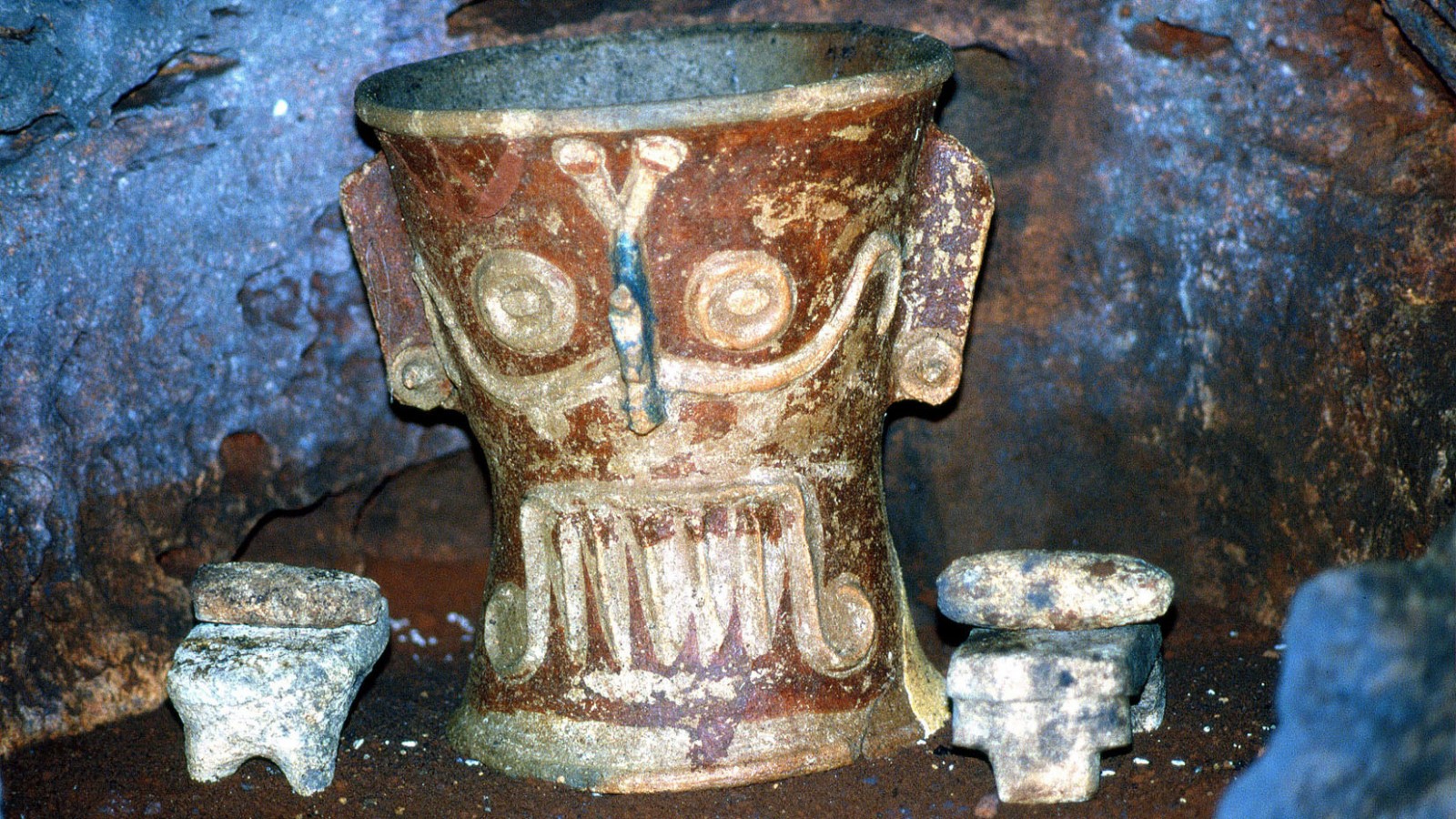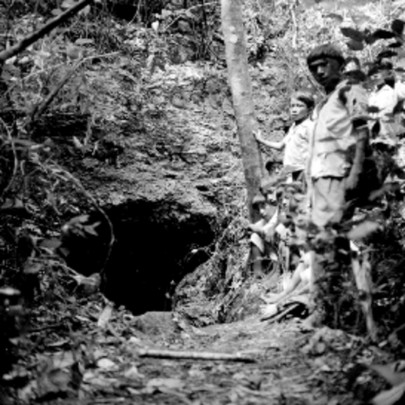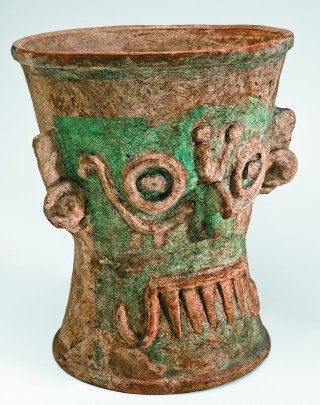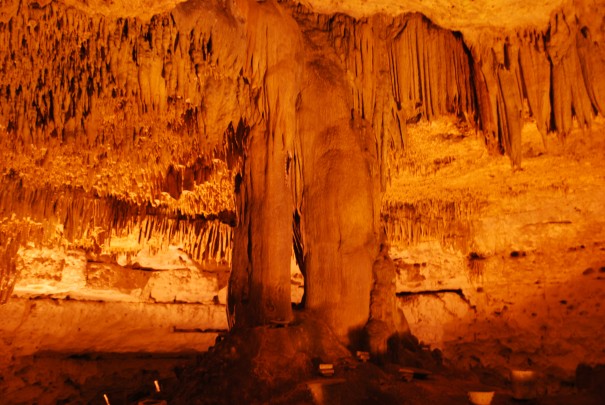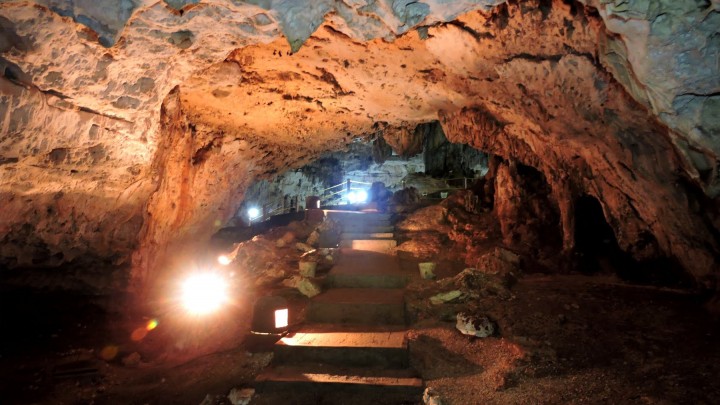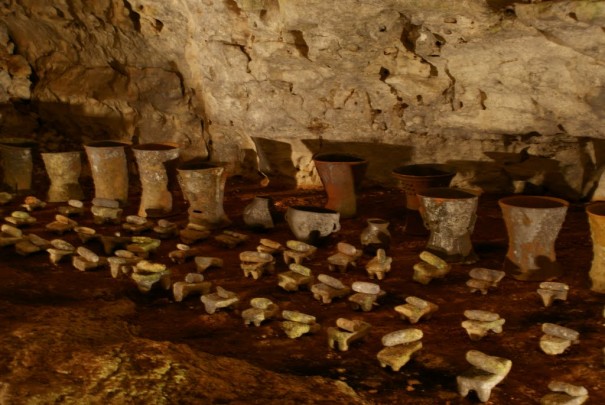Balamcanché
The throne of the Jaguar
The ancient Maya inhabitants of the region constructed a ceremonial center within a cavern. Most notable is a giant pillar made by the fusion of a stalactite with a stalagmite known as the Sacred Ceiba (silk-cotton tree).
About the site
This archeological site, located nearly four miles to the east of Chichen Itza, consists of a quadrangle of platforms and a cave system. It can be deduced that at some point it was part of the ancient pre-Hispanic city, and that it was in fact an important place for the worship of the rain god Chaac.
Six hundred and fifty feet from the entrance there is a geological formation, the product of the union of a stalactite and a stalagmite, whose form closely resembles the great ceiba: the sacred tree of the Maya. This is a place where ceremonial objects such as pots, incense burners and grinding stones where found. Also, at the bottom of the cavern where it meets the aquifer, an offering can be seen with incense burners and small grinding stones.
The site was discovered in 1932 but investigation began in earnest after September 15, 1959, when José Humberto Gómez, a tour guide and Mayan culture enthusiast, realized that one section of the cave chamber was man-made. Close examination revealed a stone wall with a stucco covering. Upon removal of the stones which sealed the access, it was proven that the space was connected to other chambers and that the cave was larger and more important than had previously been assumed.
Pottery finds indicate that the cave was used for ceremonies from 300 BC in the Late Preclassic up to 1200 in the Late Postclassic. The main materials used were from the Terminal Classic and the Postclassic from 900 to 1200, which would indicate that at this time the space was used intensively, when Chichen Itza was at its peak. It can be deduced that Balamcanché was very important in the sacred landscape of the city and was therefore a significant location in terms of the Mayan world view.
Six hundred and fifty feet from the entrance there is a geological formation, the product of the union of a stalactite and a stalagmite, whose form closely resembles the great ceiba: the sacred tree of the Maya. This is a place where ceremonial objects such as pots, incense burners and grinding stones where found. Also, at the bottom of the cavern where it meets the aquifer, an offering can be seen with incense burners and small grinding stones.
The site was discovered in 1932 but investigation began in earnest after September 15, 1959, when José Humberto Gómez, a tour guide and Mayan culture enthusiast, realized that one section of the cave chamber was man-made. Close examination revealed a stone wall with a stucco covering. Upon removal of the stones which sealed the access, it was proven that the space was connected to other chambers and that the cave was larger and more important than had previously been assumed.
Pottery finds indicate that the cave was used for ceremonies from 300 BC in the Late Preclassic up to 1200 in the Late Postclassic. The main materials used were from the Terminal Classic and the Postclassic from 900 to 1200, which would indicate that at this time the space was used intensively, when Chichen Itza was at its peak. It can be deduced that Balamcanché was very important in the sacred landscape of the city and was therefore a significant location in terms of the Mayan world view.
Did you know...
- According to the ancient Maya, the gods of the water, night and underworld dwelt in caves.
- The cave goes down to a depth of approximately 33 feet, while the passages extend to more than 1,600 feet.
An expert point of view

Marco Antonio Santos Ramírez
Zona Arqueológica de Chichén Itzá
Practical information
Temporarily closed
Monday to Sunday from 8:00 to 17:00 hrs
$75.00 pesos
Se localiza a 6 kilómetros de Chichén Itzá.
From the city of Mérida, follow Federal Highway 180 towards Valladolid and at kilometer 123 take the exit that leads to the site.
Services
-
+52 (999) 944 4068
-
This email address is being protected from spambots. You need JavaScript enabled to view it.
Directory
Responsable
Marco Antonio Santos
This email address is being protected from spambots. You need JavaScript enabled to view it.
+52 (985) 851 0137



